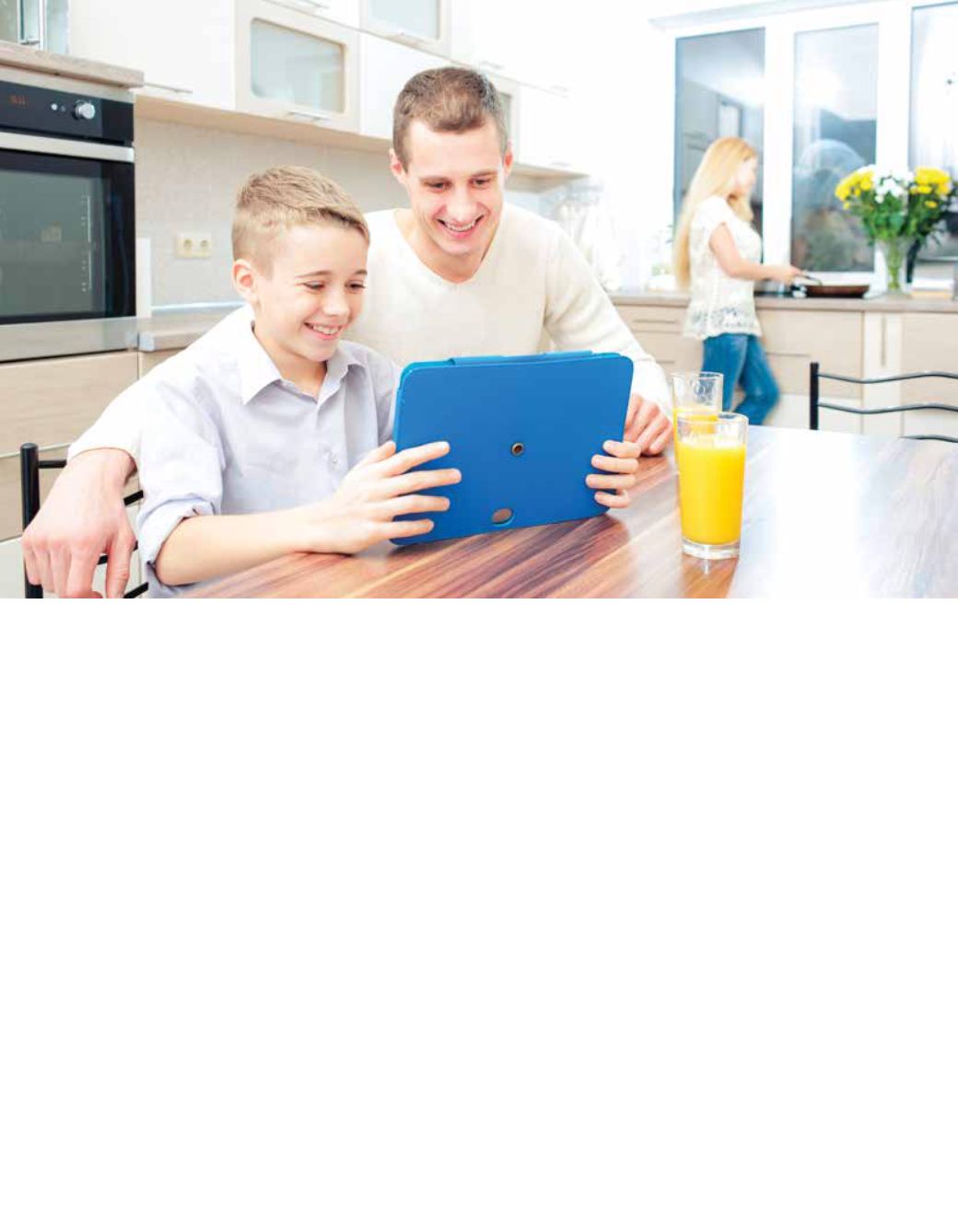
captioning, but additional apps are
available to meet a variety of needs.
There are also speech-to-text dictation
apps, such as Dragon Dictation and
Transcence, which ‘listen’ to what
a person is saying and transcribe it
onto the screen. For a child who is
deaf, their social circle is no longer
restricted to those who can use
sign language, or lots of frustrating
scribbling with a pen and paper.
As well as these communication
aids, the Hong Kong Society for the
Deaf has developed an app to help
Cantonese-speaking hearing impaired
children to improve their listening
and speaking skills. The Audiology
& Speech Training app can help
assess the child’s abilities and provide
training. According to Mandy Lam,
from the Society, “With the new app,
the trainers (teachers and parents) and
the children can practice anytime and
anywhere. We have trialled the app
on some preschool hearing impaired
children, and they were motivated by
the multi-media games and animation,
and they were willing to stay focused on
the games without realising they were
actually doing training and practice on
their listening and speech sounds.”
Visibly different
The last few years have also seen
rapid advances in the number of
apps, gadgets and settings to help a
visually impaired child make the most
of the vast resources of the internet
and communicate via text or email.
Many smartphones and tablets come
with accessibility settings, such as
large text, bold text, text-to-speech
functions, voice command options,
or even built-in magnifiers. For those
who need to use an iPad, a specially
designed magnifier can be purchased
to enlarge content.
‘Screen readers’ are also widely
available, which convert the content of
the screen (such as text messages, web
pages, e-books, or PDF documents)
into an accessible format for the user
– this might be by converting the text
into speech, or converting it to Braille.
While many smartphones and tablets
have some built-in text-to-speech
capability, there are lots of additional
text-to-speech apps and software for
a variety of devices, including JAWS,
Thunder and Window Eyes, and at a
variety of prices (including free!). Some
e-readers, such as the Kindle Fire, now
come with built-in text-to-speech. For
those who prefer to use Braille, a screen
reader can send the selected content
to a separate Braille display, which is
either connected to the device via a
USB or wirelessly. A potentially useful
app for older children who want to stay
in touch while out and about is Braille
Touch for iPhone, which allows you to
type messages in Braille.
Physical education
The range of new assistive
technologies to help overcome
challenges and limitations for children
with physical disabilities has grown
enormously over the past few years.
For children with very limited
movement and speech, the use of eye-
gaze devices – computers controlled
by blinks – has become widespread,
but in recent years the technology has
76
Playtimes


